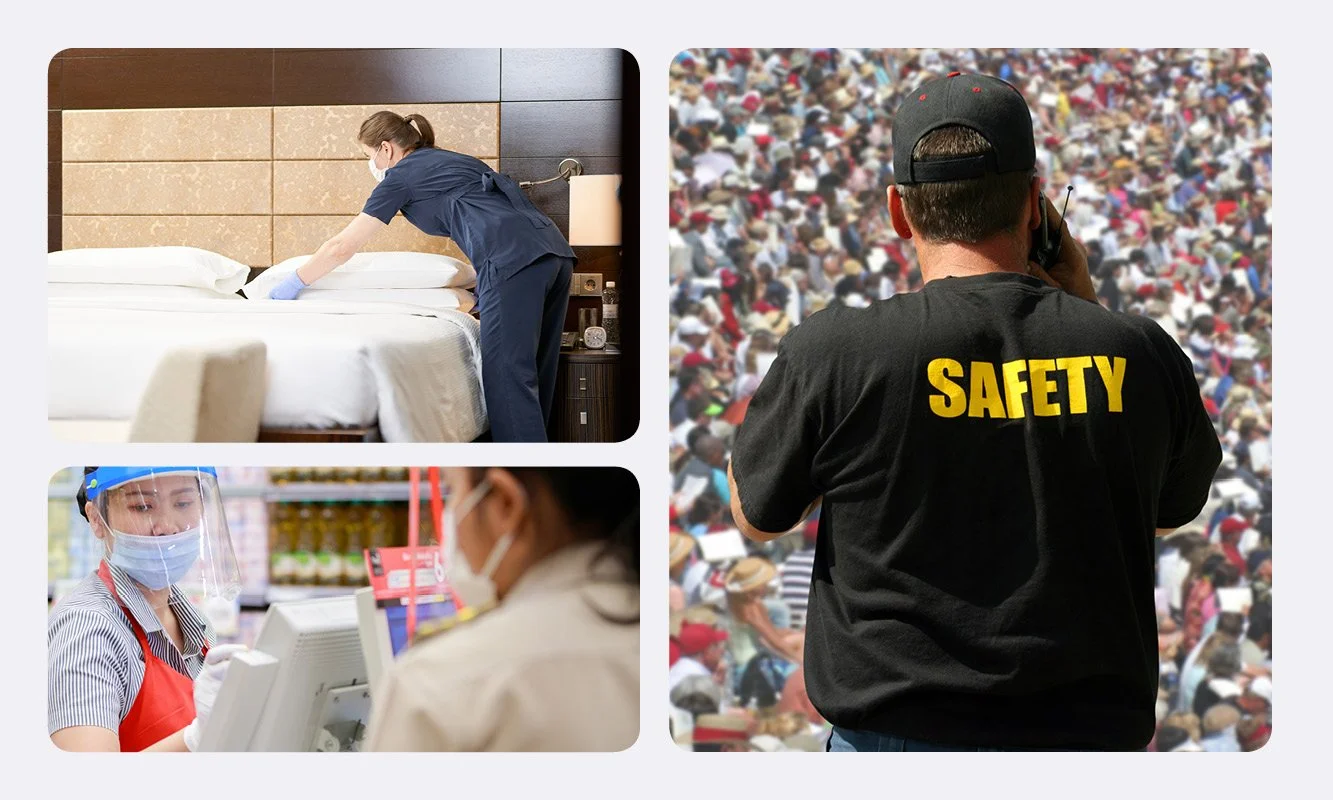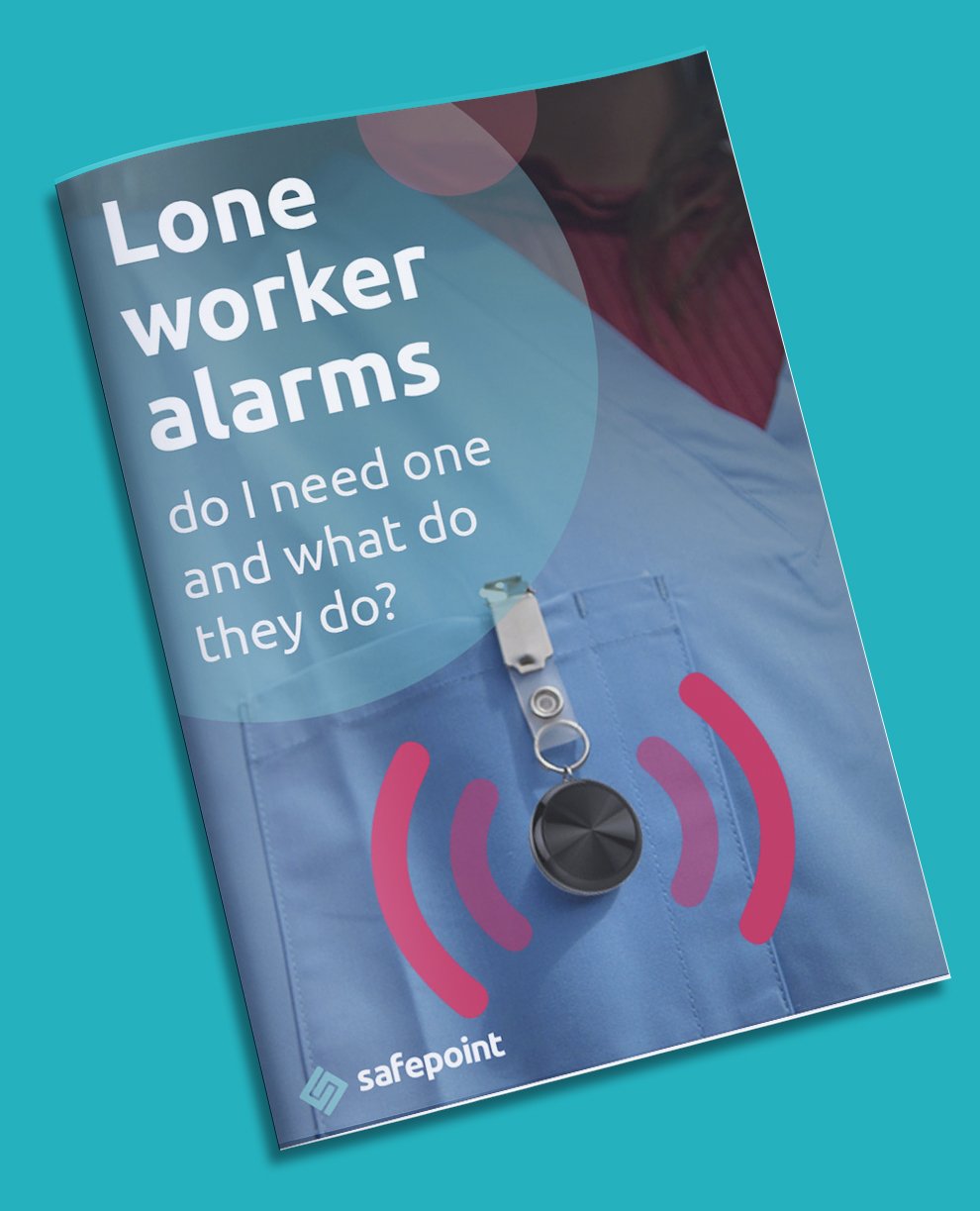Lone worker alarms –with free downloadable guide!
Do I need a lone worker alarm?
‘Lone worker alarms’ is one of the most popular search terms among lone workers. Why is this? –No doubt it comes from a simple desire for those who work alone: to know, in the case of an emergency, that someone has your back.
Whether you and your team need to invest in a ‘lone worker alarm’ system depends on the levels of risk each worker faces.
There are no hard and fast rules on which lone workers do and do not need an alarm, however, organisations do have legal a duty to find a lone working solution appropriate to their workers’ level of risk.
The law on lone worker alarms
From a legal perspective, the UK’s Health and Safety Executive (HSE) requests that employers provide ‘adequate and reliable means of communication and a way to call for help’.
Where necessary, this may include ‘devices designed to raise the alarm in an emergency which can be operated manually or automatically’. A deeper understanding around the laws of lone working can be found here.
So how do you know if an emergency alarm is right for you or your team? That may depend on the risks of your job.
Roles that can benefit from a lone worker alarm
Lone working in someone’s home
Lone workers that perform ‘home-visits’ can face a variety of risks specific to their role. When working in someone’s home, lone workers can face:
Threats from occupants –Those on home visits have little control over who is present in the home they are visiting. Occupants may be violent or aggressive and may feel more emboldened or comfortable than when in public.
Unknown environments –Homes do not have the same health and safety standards that a workplace has. Slips, trips and falls may be more likely to occur.
Ingress/egress –Getting in and out of someone’s home (particularly in an emergency) can be more difficult.
Interactions with animals –Since half of the UK adults own a pet, and a quarter own a dog, home-visiting lone workers may experience aggression from animals.
Alcohol and drug abuse –Homes are not professional environments and so there is an increased chance that the occupants may be intoxicated, and will not act in a ‘typical’ way.
Lack of supervision –All lone workers, by definition, operate under less supervision than on-site workers. However, lone workers on home visits may face a particular risk by a lack of passing traffic. Homes are designed to be private locations, after all.
Roles that typically include home working include health and social care workers, utility and construction workers, and estate agents. All may benefit from a manual or automatic alarm which can be triggered if the worker is attacked, has an accidental injury, or even if they feel threatened. We would definitely recommend emergency alarms with ‘silent alarm’ functionality for those that work alone on home visits.
Lone working in remote locations
Many lone workers operate in remote locations. These include farms, warehouses, and natural settings. For these types of lone workers, the risk of accidental injury is made greater by both the type of work and the environment. Alarms (particularly automatic alarms) can provide these lone workers with peace of mind and a much quicker response time, should anything go wrong.
Roles that typically combine lone working with remote locations include farmers, engineers, conservationists, environmental workers, and those that drive for a living.
Some late-night workers, such as security guards or warehouse staff, may work in locations that are typically filled with people but are empty for the entirety of their shifts.
We would recommend that lone workers in remote locations use an emergency alarm system that includes fall-detection and timeout alarms. This is because risks may be more centred around accidental injury, than through public aggression.
Lone working with the public
Did you know that it is possible to be a ‘lone worker’ even when surrounded by people? That’s because lone working refers to the lack of immediate support by your team, not just ‘being alone’.
Why does this distinction matter? –Well, not only is it important to stick to HSE guidelines, but it is easy to see how someone (such as a shop worker) may be at high risk by being ‘alone’ with members of the public.
In many ways, the risks associated with lone working with the public are similar to lone working in someone’s home. Working by oneself alongside customers, clients or other members of the public can bring risks of:
Aggression and violence from the public –Take, for example, the rise of aggression levelled at shop workers during and after the pandemic.
Changing environments –Customers and other non-workers can create new risks. Bar customers spilling drinks or breaking glass could be examples.
Alcohol and drug abuse –Aggression, violence and harassment can be rampant within the service industries (with alcohol or drug use often being a factor). When substance abuse is combined with tucked-away corners and private areas (such as in hotels) the risk can increase.
We highly recommend the use of wearable lone worker alarms for those that work with the public, particularly if dealing with intoxicated customers. Look for alarms that can be set to ‘silent mode’ so that users can discreetly call for assistance before a situation escalates.
Features of a lone worker alarm
Modern lone worker alarms can be a lot more intelligent than a simple ‘panic button’. In this section, we’ll look at some of the features and what may work best for your team.
Manual alarm
When thinking about lone worker alarms, you might think about the ‘silent alarms’ popular in shops and banks (or at least films about them).
Traditionally, these alarms are little more than buttons wired to a central alarm system or a hub that sends out to a response team.
Conversely, modern lone worker alarms can be taken with you, wherever you are. Safepoint’s wearable lone worker alarm, for example, can be worn on the wrist, on a lanyard, or on a set of keys. More than just triggering an alarm, however, the Safepoint lone worker alarm works with an app to send live GPS locations, as well as lots of other helpful emergency information.
Fall detection alarm
For many people, a manual alarm, no matter how accessible, doesn’t provide enough protection for their day to day risks.
Take someone who is knocked unconscious while working alone (perhaps they were up a ladder, or slipped on uneven ground). The lone worker in that case would not have time to request emergency help. In that case, the worker would require fall detection (or a time-out alarm, more of that later).
A fall-detection alarm (sometimes called a man-down alarm), such as the one built into the Safepoint wearable device, can intelligently tell if someone has taken a fall and will automatically send out an alert.
Time-out alarm
For many roles, a manual alarm or even a fall-detection system may not provide sufficient protection. There may be incidents where a worker is in danger and they are unable to manually trigger an alarm, but they have not experienced a detectable ‘fall’.
But how do time-out alarms work? Usually, a worker will set a time limit for a certain task they’re about to embark on. Such tasks may include ‘driving to the site’, ‘making a delivery’ or ‘visiting a client’.
If the worker overruns their allotted time without checking in as ‘safe’, an alarm will be triggered.
Time-out alarms work great as belt-and-braces protection alongside other methods. If a user’s device runs out of battery, cannot get signal, or is unable to send an alert for any reason, a time-out alarm can help draw attention to the situation.
If a lone worker triggers an alarm, who is notified?
As mentioned at the start of the article, built-in ‘panic alarms’ and ‘silent alarms’ for businesses have been around for a long time.
These days, lone worker alarms have not just got a lot more intelligent in how they trigger, but also how the alarm is handled.
Take Safepoint’s lone worker alarm system, for example. With Safepoint, a lone worker can trigger an alarm in three ways:
A manual alarm –via tapping a button on their wearable device or app
A fall detection alarm –detected via their wearable device
A time-out alarm –set using their app.
Once one of these alarms is triggered, however, the lone worker, or their company, can choose how an emergency alarm is handled:
In house –with Safepoint’s self-managed service, an organisation handles its alerts in-house. Sometimes an organisation may appoint supervisors or managers to be the ‘Guardians’ (alert handlers). Others may have their own security or health and safety team. Meanwhile, self-employed workers may choose a friend or partner to be notified in the case of an emergency alert.
Alarm Receiving Centre (ARC) –with Safepoint’s GuardianPlus Alarm Receiving Centre, however, all emergency alerts are handled by a team of professional 24/7 responders. These responders will take control of the alert, check in with the lone worker, notify any relevant members of the worker’s team and, if necessary, liaise with the emergency services.
What happens when a lone worker alarm is set off?
Unlike fixed location alarms, lone worker alarms can be triggered anywhere, so it's really important that, in the event of an emergency, responders know exactly where to go.
That’s why, with modern lone worker alarms, a live GPS location is sent alongside the alert. Live location is a crucial element but, when dealing with an alert, it’s important to get as much information as possible. That’s why Safepoint’s lone worker alarm system sends the following data with an alert:
Continuous live location –location tracking doesn’t stop at the alert, but will continue on until the alert is resolved. Safepoint captures street address, latitude and longitude, and even ‘what3words’ addresses.
The user’s task history –what they’ve been working on and their journey before the alert was triggered (only if the user had an active task running when they triggered an alert)
Battery and signal/data –for internal guardians and GuardianPlus responders, it is important to know if someone is low on battery or mobile reception so that they can piece together what has happened –particularly if the user is not responding to calls.
Download our free lone worker alarm guide













